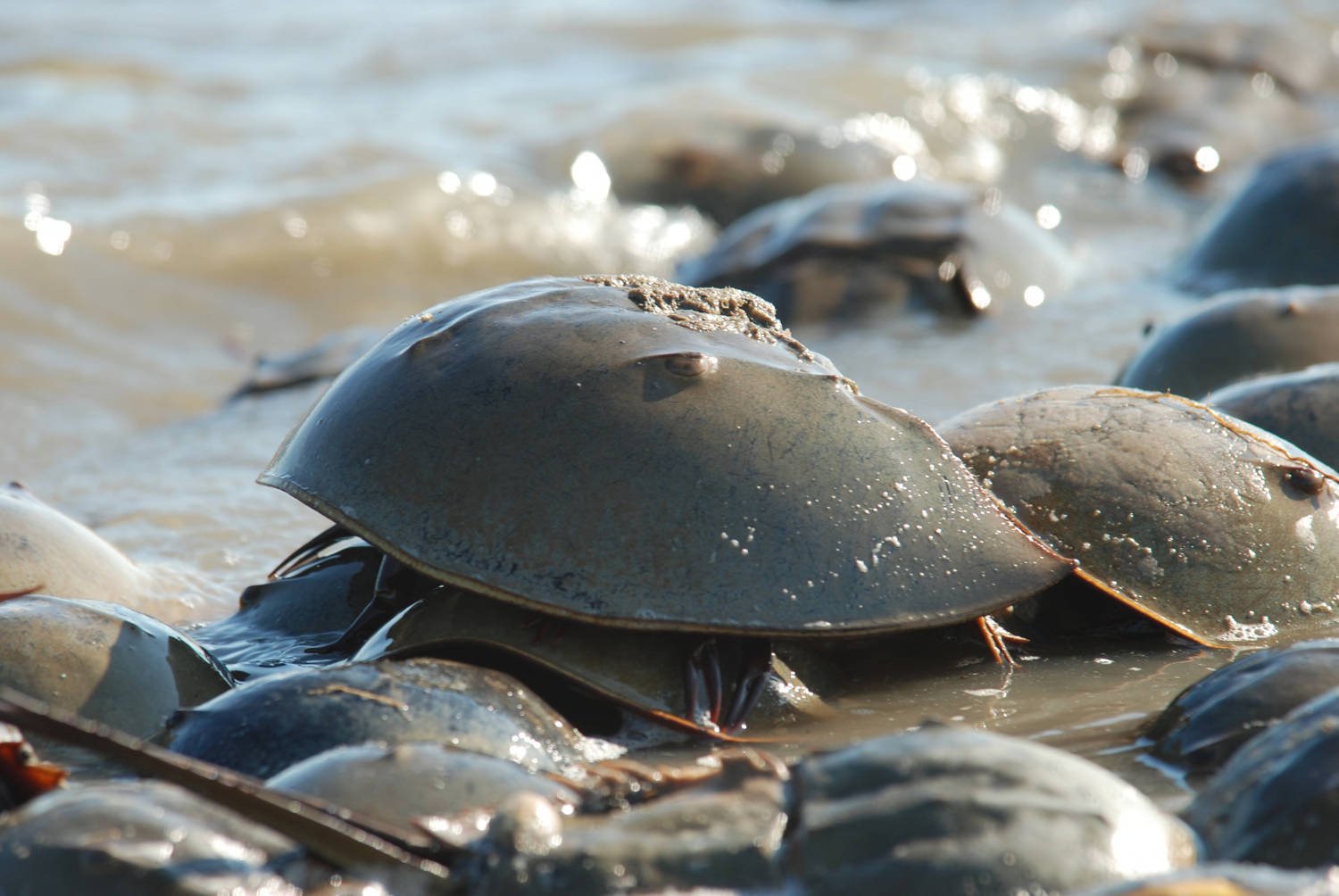
Photo courtesy of the Seatuck Organization
By Nicole Cardone
It is extremely important to open the door for discussion about the health of our environment. Discussion enhances awareness and awareness is the key to making important changes in our lives and the way we humans live on Earth as a species. Delicate ecosystems are quickly being destroyed. Overharvesting is one of the ways in which humans are promoting the rate of decline we see in our precious ecosystems.
Each year, more than 150,000 horseshoe crabs are hunted by baymen to be used as bait in whelk and eel fishing. Additionally, they are hunted for their blood, which contains a valuable enzyme used in vaccination purification testing. Synthetic substitutes for this enzyme, known as Limulus Amoebocyte Lysate (LAL), have been produced and are used in other countries successfully. The reason why horseshoe crabs are still hunted and bled-out in the United States is great fuel for further investigation.
Environmental Advocates such as Seatuck Environmental Association and the Atlantic States Marine Fisheries Commission work towards the protection of species whose populations are rapidly declining, such as horseshoe crabs. The protection of this species is important for many reasons. Protection is vital to the replenishment of their population. Horseshoe crabs are food for migratory shorebirds such as red knot. Allowing them to replenish will benefit humans and the ecosystem, symbiotically.
On June 30, 2022, Governor Kathy Hochul signed a bill that “…relates to the regulation of taking crabs, including minimum and maximum size limits, open and closed seasons including lunar closures, and a prohibition on the harvest of crabs in amplexus.” This bill is specific to horseshoe crabs, Limulus species.
Although this law has already been active, the purpose of the bill recently signed was to amend the environmental conservation law so that the Department of Environmental Conservation (DEC) could extend practices from the year 2023 to 2024. This bill, known as Assembly Bill A7710-A, can be analyzed at www.nysenate.gov/legislation/bills/2021/A7710.
The purpose of this legislative act is to replenish the horseshoe crab population by allowing them to [naturally] produce greater egg densities in their natural habitats, by protecting them from being harvested prematurely.
“Minimum and maximum size limits,” as stated in the bill, refers to the size that a horseshoe crab can be when harvested. Larger female horseshoe crabs, on an individual basis, bear a disproportionately greater number of eggs than smaller female horseshoe crabs. The value and purpose of implementing size limitations is to safeguard the larger females. Female horseshoe crabs who fall below the minimum size requirement are also protected, because they have not yet had the chance to bear eggs and contribute to the growth of their population. Protecting reproductively immature female horseshoe crabs may increase the population of horseshoe crabs by allowing them to develop to reproductive maturity and lay eggs on the shore.
Horseshoe crabs reproduce during a window in May and June, specifically during the new moon and full moons. “Lunar closures,” as stated in the bill, refers to the reproductive windows of horseshoe crabs. These closures are specifically set as five days around the spawning periods and are specific to the last moon in May and the first moon in June, plus two days surrounding each window.
Seatuck Environmental Association is “a nonprofit, 501(c)(3) organization dedicated to conserving Long Island wildlife and the environment,” according to their website seatuck.org. They have played a major role in advocating for the protection of horseshoe crabs. John Turner, a conservation policy advocate for Seatuck, along with other Seatuck advocates, worked closely with New York State Assemblyman and Chair of the Environmental Conservation Committee Steve Englebright to promote the passing of this legislative act, which was passed unanimously by the New York State Senate.
Seatuck is working with other organizations, such as Cornell Cooperative Extension program, in hopes to develop a synthetic replacement for horseshoe crabs as bait.
“We believe that the strategies in the legislation to better protect horse- shoe crabs make a great deal of sense and we hope to work with baymen and the Department of Environmental Conservation to implement it,” Turner said. “More horseshoe crabs is a good thing.”































